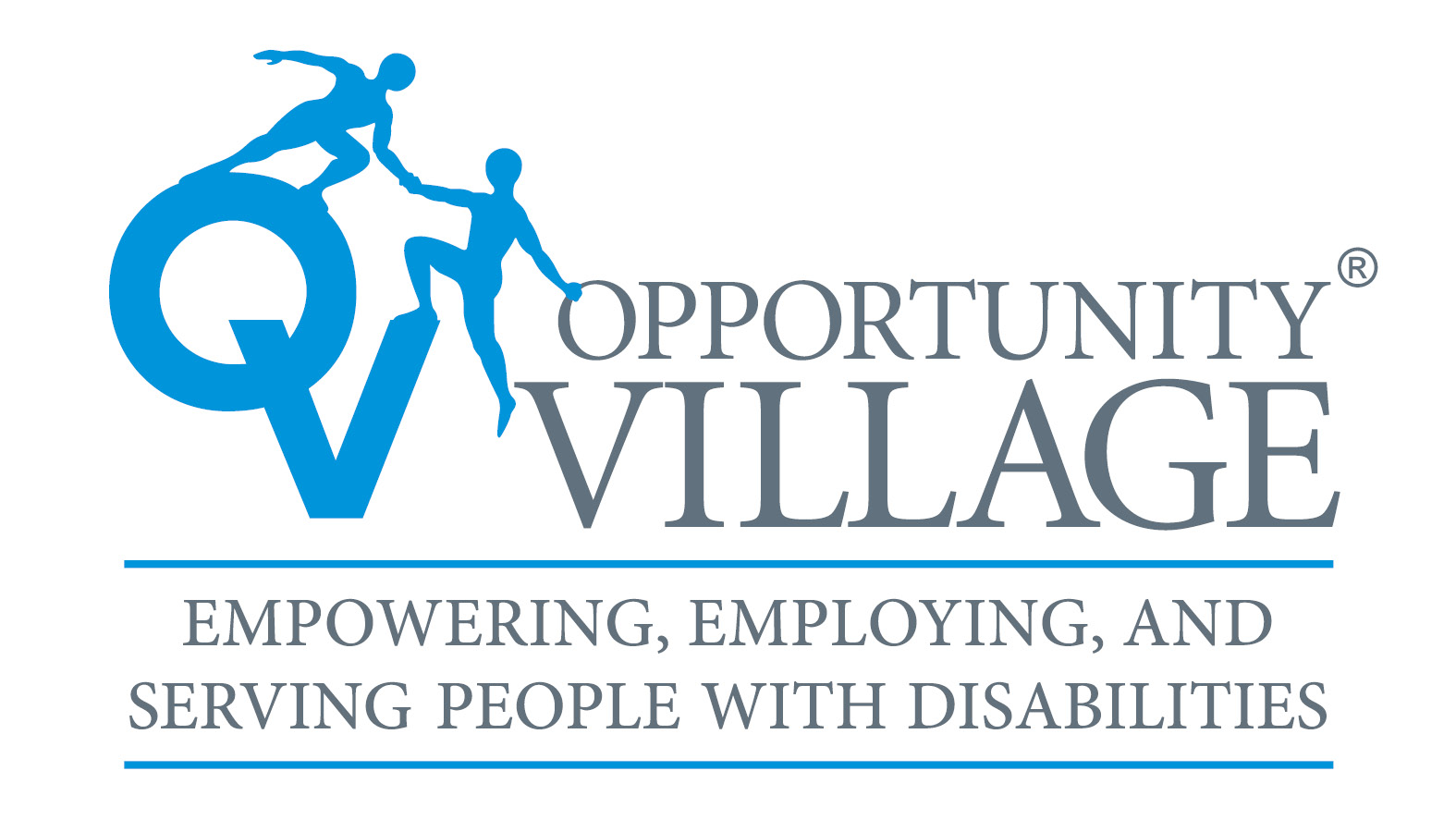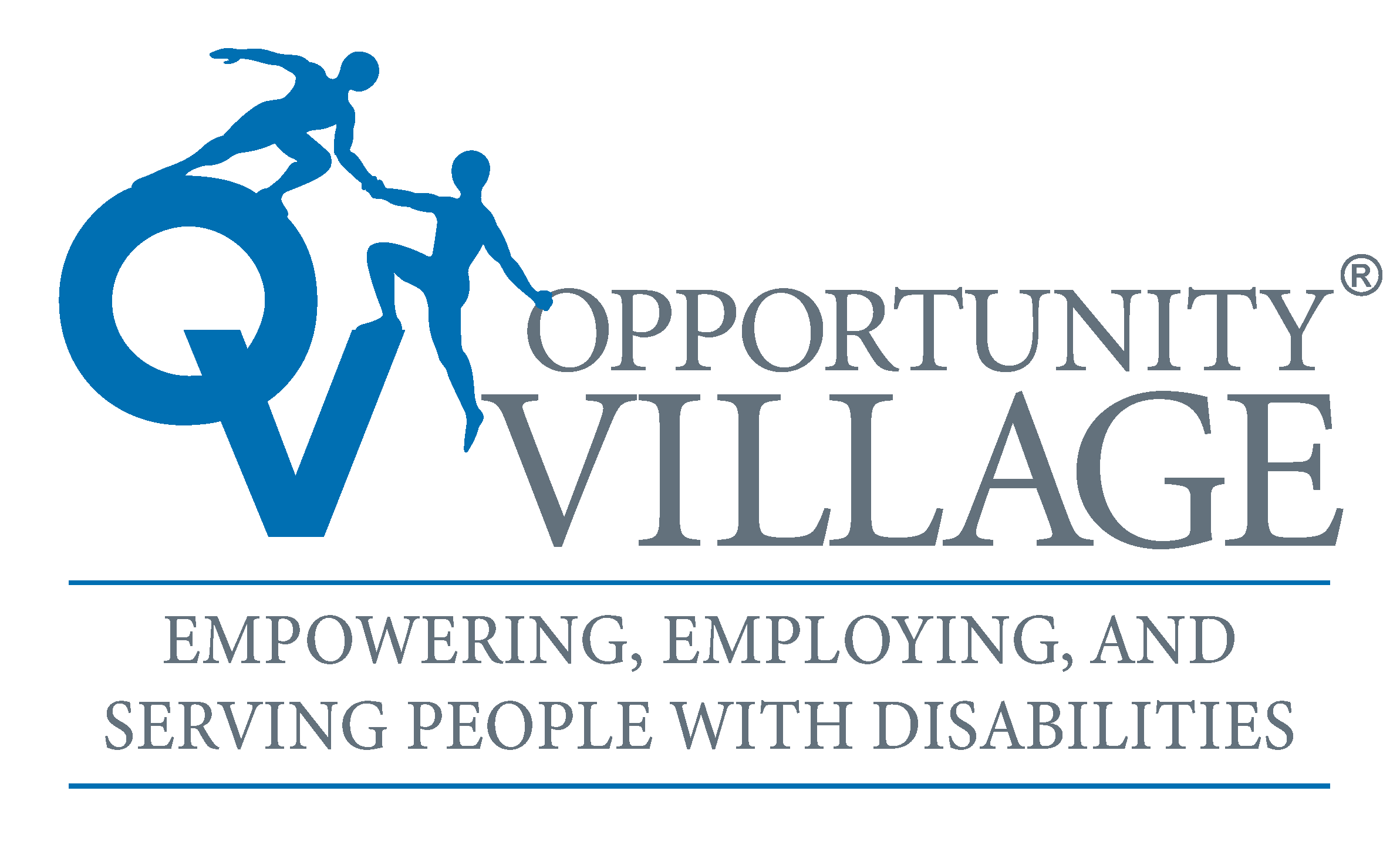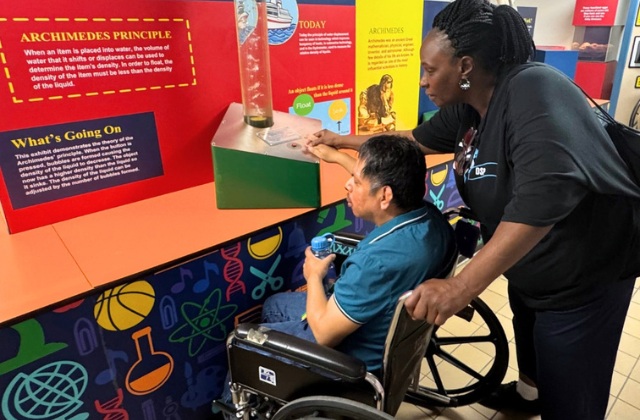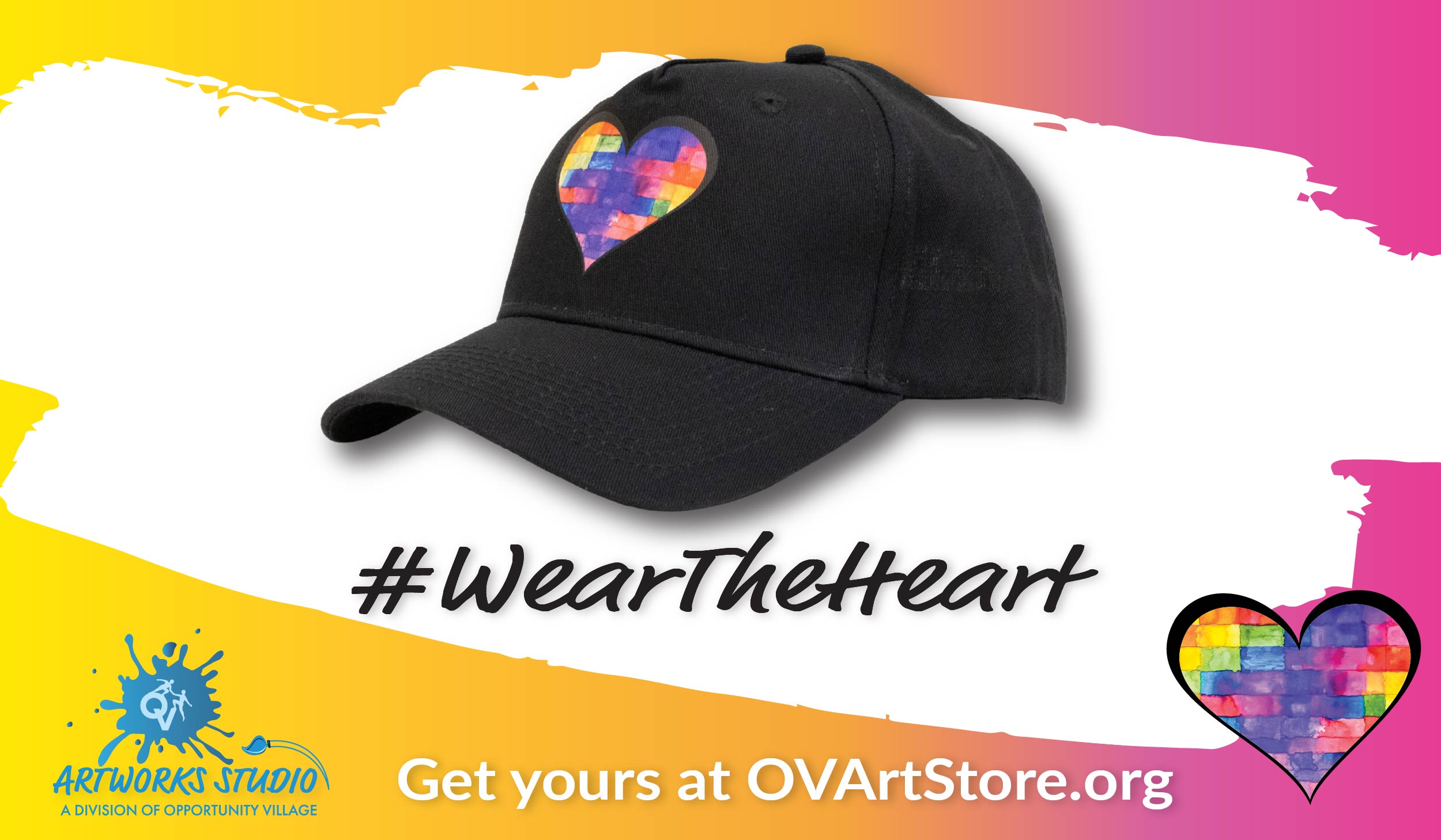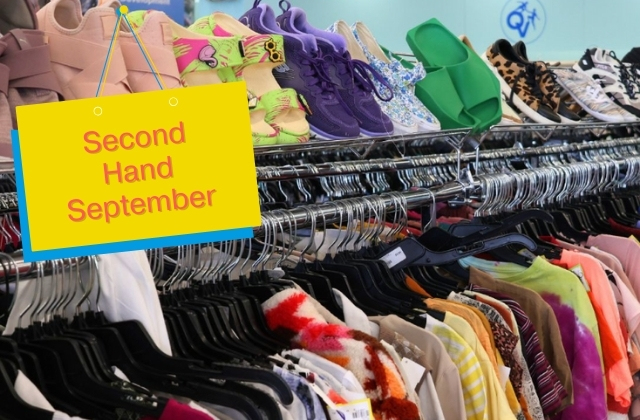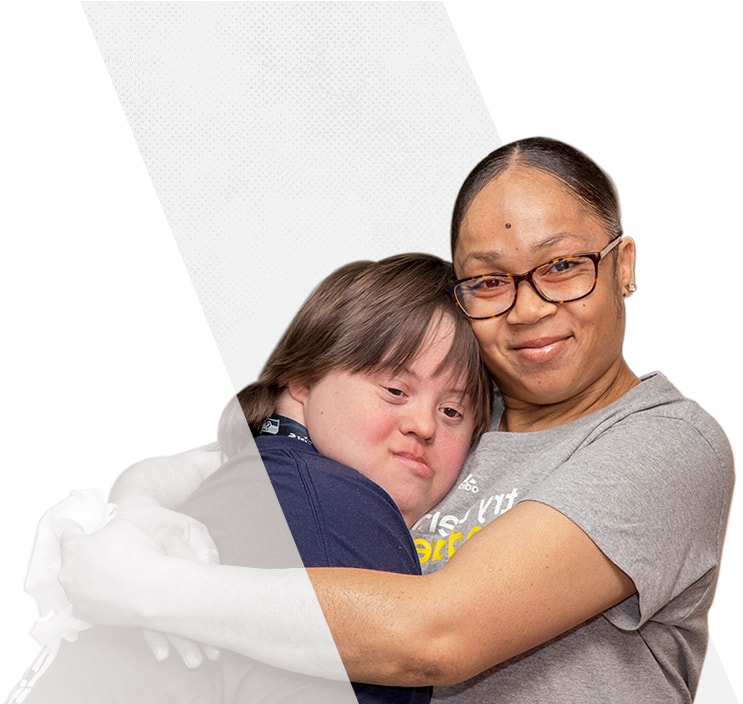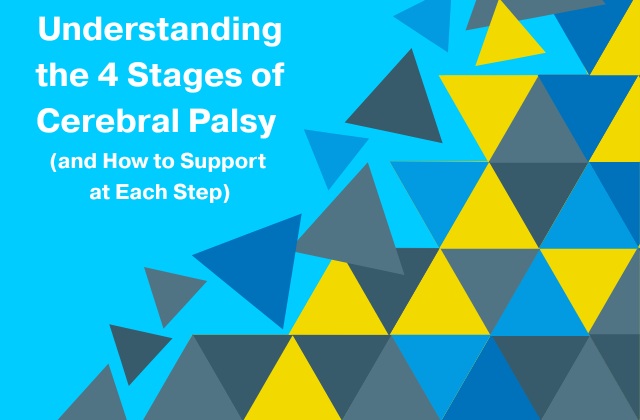
Cerebral palsy (CP) is the most common motor disability in childhood (it affects about 1 in 345 children in the US), and the challenges change shape as a child grows into adulthood.
CP mainly impacts movement, posture and coordination. But some people experience changes in speech, learning, or sensory processing, too.
No two people experience CP the same way. But across a lifetime, families often notice a rhythm: key stages of cerebral palsy where support, therapy and accommodations evolve. These key stages of change occur during infancy and early childhood, when beginning school, transitioning into adulthood, and aging.
Each stage has new opportunities to build strength, independence and connection. And you’re not alone in your efforts — we’ve been helping people thrive with cerebral palsy for decades. There are supportive treatments, therapies and accommodations that can make a big difference.
On that note, we’ve put together a guide to the different stages of cerebral palsy, focusing on what to expect and how to make life feel more joyful, supported, connected and independent.
With World Cerebral Palsy Day raising awareness on October 6, it’s a good moment to shine the spotlight.
Cerebral Palsy Stage 1: Infancy and Early Childhood — Spotting The Signs
What You Might Notice
- Muscle stiffness or unusual floppiness.
- Delays in sitting, crawling, or walking.
- Feeding difficulties or trouble swallowing.
- Movements or reflexes that don’t look typical.
Your child may undergo developmental screenings, see specialists, or have an MRI before you’re given a diagnosis. For many families, this stage is overwhelming because the language is medical and the future suddenly feels uncertain. You didn’t expect this, and you’re probably not at all sure where to go now.
Supports That Help Most
- Early Intervention (EI): Every state has an Early Intervention program (under Part C of the Individuals with Disabilities Education Act (IDEA)) that provides therapy for children under three, usually at home or in the community. Families should request an evaluation as soon as concerns arise.
- Therapies: You may start getting physical therapy for strength and movement, occupational therapy for fine motor skills, and speech therapy for communication and feeding.
- Assistive devices: You may consider trying braces, supportive seating, or walkers (even in toddler years) to build safe mobility.
- Encouragement and positive reinforcement: All children react well to feeling encouraged and supported. Your child with cerebral palsy is no different. Celebrate their efforts and share in their toddler triumphs to help them feel joyful and successful. Use positive reinforcement to build confidence.
- Family supports: While there are challenges for your child (of course), there are also challenges for you as a parent or close loved one. The weight of meeting their needs can become heavy, no matter how much you love and enjoy them. Parent resource centers, peer-to-peer mentoring, and respite services can ease the load of caregiving.
Tip: What’s a Parent Resource Center?Parent Resource Centers (often called Parent Training and Information Centers) are free, community-based hubs funded under federal law. They help families of children with disabilities learn about:
- Education rights (like IEPs and school supports).
- Healthcare and Medicaid services.
- Local resources for therapy, respite, or adaptive equipment.
- Peer support (often from other parents who’ve walked the same path).
Every state has at least one, and larger states can have several. You can find yours by searching “Parent Training and Information Center” + your state. Think of it as your personal guide through the maze of medical and school systems.
Checklist: Questions to Ask Now
- What therapies should we prioritize first?
- How do we access my state’s Early Intervention program?
- Which equipment or supports will my insurance or Medicaid cover?
Cerebral Palsy Stage 2: Childhood and Adolescence — Growing into New Needs
What You Might Notice As Your Child Grows
- Tight muscles or involuntary movements become more pronounced.
- Fatigue during school or play.
- Speech or learning challenges that show up in classroom settings.
- Social differences, where kids risk feeling excluded.
This is where your child typically enters a more structured education system. Differences can become more apparent during this stage as they adapt to a system originally designed for their typical peers — a schooling system is intended for bodies and brains that work differently from your child’s. However, with the right support, your loved one can absolutely thrive. So, what does that look like?
School Accommodations
If cerebral palsy affects learning, public schools must provide an Individualized Education Program (IEP). This can include things like in-school therapy, extra time to complete tasks, or adaptive seating.
Medical Management
You will find your medical team suggests a few ways to manage cerebral palsy. Some of these may be orthopedic interventions (surgical and non-surgical treatments) like Botox injections, tendon lengthening and medication to help reduce muscle tightness.
Adaptive Equipment
Communication devices, walkers, or wheelchairs keep kids active in and out of the classroom.
Community Activities
All children deserve to feel belonging and experience success and mastery. Activities like adaptive sports teams, inclusive arts programs, or summer camps build friendships and belonging, allowing them to participate and succeed.
Questions to Ask Now
- Does my child’s IEP reflect both academic needs and social inclusion?
- What adaptive programs exist locally for sports, arts, or recreation?
- How can we access Medicaid waivers or private insurance for equipment?
One middle-schooler may wheel onto the basketball court with adaptive equipment, while another thrives in a drama club with a communication device. Both are fully part of their communities, just with different supports.
Now, another major transition happens when you leave school. Let’s take a look at how you can help yourself or your loved one transition out of the safety-net school can provide.
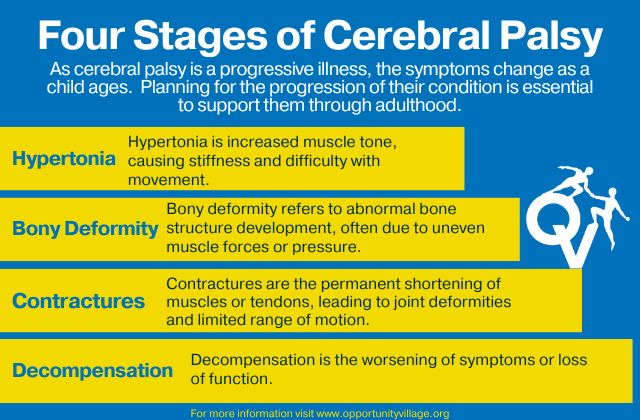
Cerebral Palsy Stage 3: Young Adulthood (Transition and Independence)
The shift out of high school is probably the biggest transition yet. Supports that were automatic in childhood (like school-based therapy) don’t transfer unless families plan ahead. Young adults begin defining goals around work, education, housing, and independence.
Supports That Help Most:
- Transition planning: By federal law, IEPs must include transition goals starting by age 16. These can include job skills, community living and self-advocacy.
- Vocational supports A significant factor in gaining independence is finding work (where possible). State Vocational Rehabilitation agencies, or in the Las Vegas Valley, pre-vocational services at Opportunity Village help young adults prepare for work.
- Postsecondary options: If further study is on the cards, inclusive college programs and training centers give students with cerebral palsy opportunities to learn in an adaptive setting.
- Independent living: Living independently from the family unit may start to feel important for a young adult. There are many ways to support this goal. Medicaid Home- and Community-Based Services (HCBS) waivers may cover personal attendants, supported housing and adaptive transportation. If you’re in Las Vegas, consider Opportunity Village’s trusted supported living arrangement services.
- Life skills coaching: Learning to budget, shop, or self-advocate makes independence more realistic.
Tip: What’s a Medicaid Waiver?
Medicaid Home- and Community-Based Services (HCBS) waivers are special programs that let people with disabilities get support outside of institutions (in their own homes or communities).
They can cover things like:
- Personal care attendants for daily living support.
- Supported housing so adults can live more independently.
- Transportation to work, programs, or medical appointments.
- Respite care for families and caregivers.
Every state runs its waivers a little differently. Some have waiting lists, so it’s best to apply early. You can usually start by contacting your state’s Medicaid office or developmental disability agency.
Think of waivers as extra support that opens the door to independence — helping adults with cerebral palsy live and work independently in their own communities.
Questions To Ask During The Transition to Young Adulthood
- What adult services (SSI, Medicaid, vocational rehabilitation) should we apply for before leaving high school?
- Are there inclusive postsecondary programs nearby?
- Which local employers offer supported or customized employment?
A young adult may spend mornings in a supported job at a retail store and afternoons in a life skills class. With the right scaffolding, independence builds gradually. You may also like to read our guide: Transitioning to Adulthood with Cerebral Palsy.
The next big stage of change comes as you start to age.
Cerebral Palsy Stage 4: Adulthood and Aging (Staying Healthy and Connected)
What You Might Notice
- Chronic pain, arthritis, or fatigue can increase with age.
- Mobility may change, so walkers or wheelchairs may become more necessary
- Social isolation is a risk if community ties weaken.
What Helps During Aging with Cerebral Palsy?
Regular medical care is helpful for all who are aging, but if you have CP, it’s an essential part of maintaining independence. Adults should see providers familiar with CP, including physiatrists and orthopedic specialists.
The next thing to consider is a high-quality community program. Day habilitation programs at Opportunity Village in Las Vegas and others nationwide provide social engagement, meaningful activities, and caregiver respite.
